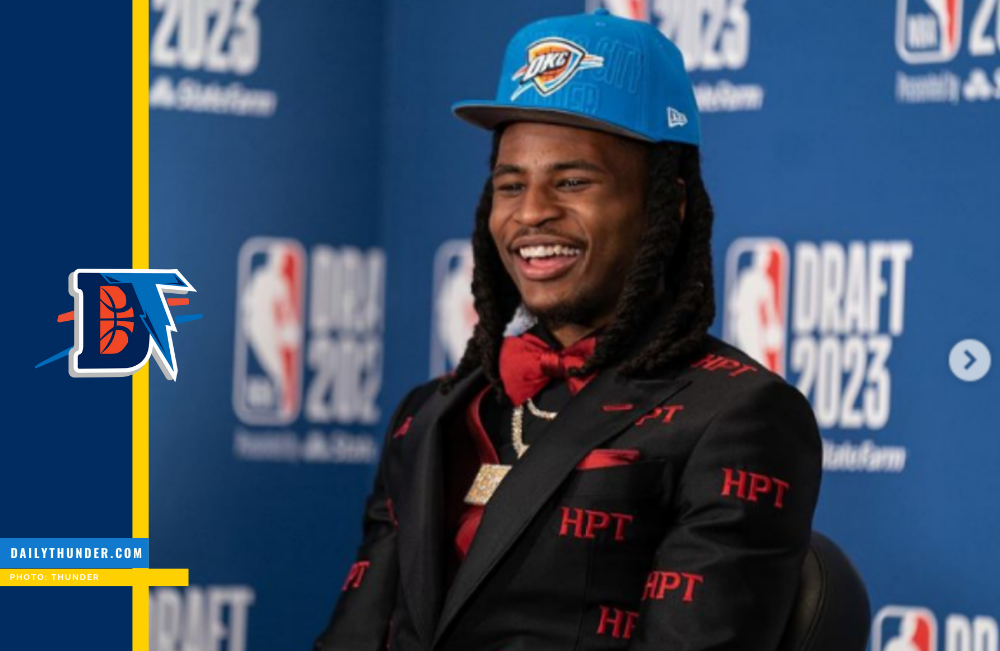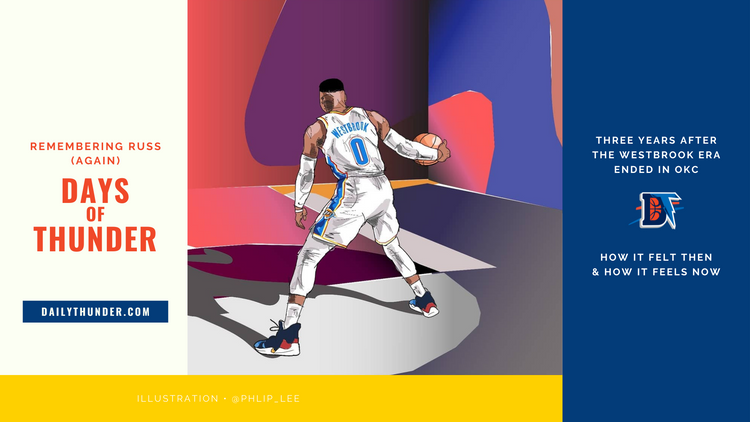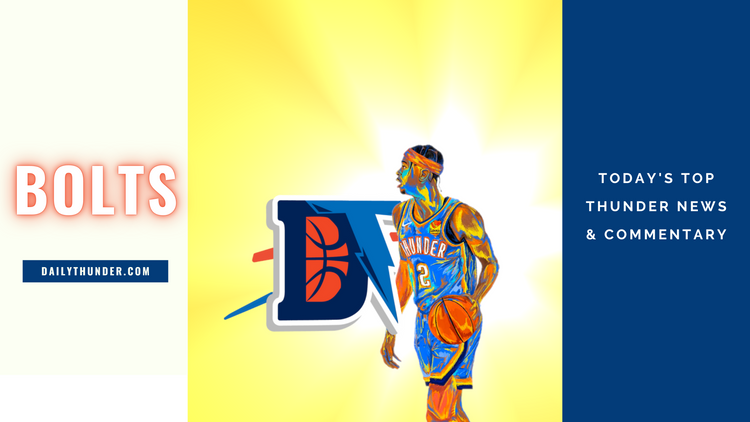Something big: Three possible trades that could push the Thunder back to contention


NBAE/Getty
Recently, the Oklahoma City Thunder made some small roster moves that could have a huge ripple effect for the future of the franchise. Signing Russell Westbrook to an extension was the first step in getting this process into motion. With that anchor in tow, the Thunder have now shifted their focus from being a dual superstar team with supporting role players surrounding them to more of a homogeneous squad where every player on the court is a threat, with Westbrook leading the charge from the point guard position. The expectation is that Victor Oladipo will alleviate some of the scoring load from the backcourt/wing, while Steven Adams will continue his development as one of the premier defensive centers in the league. But even with all that, the Thunder are still a ways away from returning to contention.
To get there, the Thunder, of course, need a top tier player to join Westbrook. The moves they’ve recently made point to something significant happening in the near future. You don’t sign or obtain back-ups for your back-ups unless you are planning to ship them out. The last three roster moves the team made had them either signing or trading for players in positions that were not of need. After the loss of Kevin Durant and Serge Ibaka, the Thunder’s major position of need was at small forward/wing (although Ibaka was a power forward, he played like a small forward on the offensive end). Instead, the Thunder signed two point guards and traded for another power forward.
What was more surprising was the deals the Thunder handed out. Ronnie Price received a 2 year/$5 million deal with both years fully guaranteed. If history is used as a guide, the Thunder usually either trade for a third string point guard in the final year of his deal, sign a post-trade deadline buyout, or sign said player to a one year, minimum deal. So when they gave Price two years guaranteed at something other than the minimum, it brought to question why they would do that. If Cameron Payne was supposed to be the back-up point guard for the foreseeable future, why would the Thunder waste precious cap space on the second year of Price’s deal?
The answer to that question likely came when the Thunder signed 2014 2nd rounder Semaj Christon to a multi-year deal. While the deal is non-guaranteed, they did guarantee $200,000 of the deal, likely for Christon to latch on to the Thunder’s D-League affiliate, the Blue, if he does not make the roster at the beginning of the season. Why invest so much into a 4th string point guard, if the team is not intending to use him sometime in the near future? All this point guard maneuvering leads to one thought: Cameron Payne is available for the right trade.
The most recent move by the Thunder saw them trade for Denver big man Joffrey Lauvergne. On a team that is chock full of big men, why would the Thunder not only trade for another big man, but also introduce a 16th guaranteed contract to their books? If he were to bring a different dimension to the team, the trade might be understandable. But his game basically mimics that of Enes Kanter’s, even down to the struggles on the defensive end of the floor. Where they differ significantly is on their impact financially. While Kanter costs the team about $17.9 million, Lauvergne’s figure is 1/10th of that cost at $1.71 million.
Where do the Thunder go from here? If they just want to get the roster down to 15 contracts, they could easily trade Mitch McGary to any team with about $1.6 million in cap space, and offer that team $1.6 million in cash for the favor of taking McGary off their hands. They could do the same thing with Josh Huestis, although small forward is not a position the Thunder want to be trading at this point. But Thunder GM Sam Presti is not doing all this maneuvering just to pay someone to take a player of his off his hands. Instead, all signs are pointing to something big happening.
And that “something big” doesn’t necessarily have anything to do with the free agent class of 2017, which includes Gordon Hayward, native son Blake Griffin, and yes, even Kevin Durant. Let’s, for a second, look at what the Thunder have to do to get enough cap space to offer any of these three max money. They would have to trade Enes Kanter into someone else’s cap space without taking back any salary. They would likely have to renounce the rights to one or more of Steven Adams, Victor Oladipo, and Andre Roberson. And, they would likely have to trade away their 2017 first rounder (on draft night, of course). And after the Thunder have done all that, there’s still a high possibility they get left at the free agency altar empty-handed.
If you know anything about Presti, you know this type of scenario runs completely counter to how he operates. Part of Presti’s success has been in his ability to obtain assets in which he can manipulate/control the situation. The Huestis agreement was his way of manipulating the amount of time an asset could spend within the grasp of the organization. The numerous deals for young assets still on their rookie deals (Kanter, Oladipo, Lauvergne, Eric Maynor, etc) are all ways of controlling the options a player has. To put it nicely, Presti is a control freak (which is a good character trait to have as a GM). For Presti to put all his eggs in the chance-riddled basket called free agency, it would probably take an Act of Congress and an act of God.
So if free agency isn’t the route, then what is? With nearly $30 million in realistic, tradeable assets, the Thunder will likely try to get that top tier player via trade. While the getting may be difficult, the NBA season has a way of causing things to happen unexpectedly. Here are three possible trades that could turn the Thunder back into contenders.
Trade 1- Oklahoma City gets: Paul George and Jeff Teague
- Indiana gets: Enes Kanter, Cameron Payne, and Victor Oladipo
Yes, I know. There was that recent click bait article with the asinine rumor that the Thunder were discussing a trade to bring in George. But, let’s look at it from George’s perspective. The closest he’s ever been to winning a title was four years ago on a team that featured himself, Lance Stephenson, and Roy Hibbert. For being one of the more dynamic players in the league, he has never had that other superstar alongside him to push him and his team to that next level. As he enters his prime, it may get to the point where George may quietly demand a trade to Larry Bird. George has three years left on his deal, with the last year being a player option he will likely decline. In essence, Indiana has two years to put a competitive team around George.
And how did they get that started? By surrounding him with Thaddeus Young, Al Jefferson, and Monta Ellis. That would’ve been a pretty good team in 2011. But in 2016, those are basically non-tradeable assets, with each making $10 million plus. In Kanter, Payne, Oladipo and Myles Turner, the Pacers get younger fast, and have a core they can quickly build around. For the Thunder, and the NBA, the possibility of Paul George vs. Kevin Durant in the Western Conference Finals for the next 5 years would make everyone involved salivate to the point of dehydration.
Trade 2- Oklahoma City gets: Jimmy Butler, Tony Snell, and Taj Gibson
- Chicago gets: Enes Kanter, Ersan Ilyasova, and Alex Abrines
Quick, name the two things Chicago needs the most? No, silly, not Michael Jordan and Scottie Pippen. Chicago is in desperate need of interior scoring and outside shooting. A team with Rajon Rondo and Dwayne Wade in the backcourt needs spacing to be successful. For as good as Butler is, he does not provide that spacing. Other than Doug McDermott, who can’t stay on the court defensively, the Bulls have no guards or wings who can space the floor. Enter Abrines and Ilyasova, who would help keep defenses honest and would give Chicago shooting depth off the bench. The departure of Pau Gasol robbed Chicago of any form of interior scoring. Adding Kanter to the mix would provide them with someone who can mix it up inside, while attracting enough attention to give Wade room to operate.
For Oklahoma City, you can either run a Westbrook, Oladipo, Butler backcourt or you could bring Oladipo off the bench with Payne. Unfortunately, you almost run into the same issues that Chicago faces with Butler in having a guard/wing rotation that is not very efficient from deep. But defensively, the Thunder would be a juggernaut on the perimeter.
Trade 3- Oklahoma City gets: Khris Middleton
- Milwaukee gets: Enes Kanter, Cameron Payne, and a lottery protected 2020 1st round pick
All that for a player who’s not even a superstar? Yes! All you need to know is that he has shot over 40% from 3-point territory for the past three seasons. And he is big enough and long enough to defend the small forward position and play some small ball 4, if necessary. He would be the ultimate complimentary player for Westbrook and would do wonders for the Thunder offense. Would Milwaukee be willing to give him up? I don’t know, but they were dangling him for a point guard earlier this offseason. With Giannis Antetokounmpo and Jabari Parker likely coming up on max extensions in the next two offseasons, the Bucks may be willing to part ways with Middleton if it gets them young assets.
The Thunder have plenty of options heading into the season. The trading season doesn’t really intensify until after December 15th, when most of the free agents who signed in the offseason are eligible to be traded. The Thunder may simply cut their losses from McGary until then and see how the market pans out. The NBA season has a way of galvanizing trade discussions between teams that weren’t discussing anything at the beginning of the season. Injuries, locker room squabbles, and chemistry issues can turn teams into sellers pretty quickly. It’s a wait and see game for the Thunder at this point and Presti is on the prowl.




